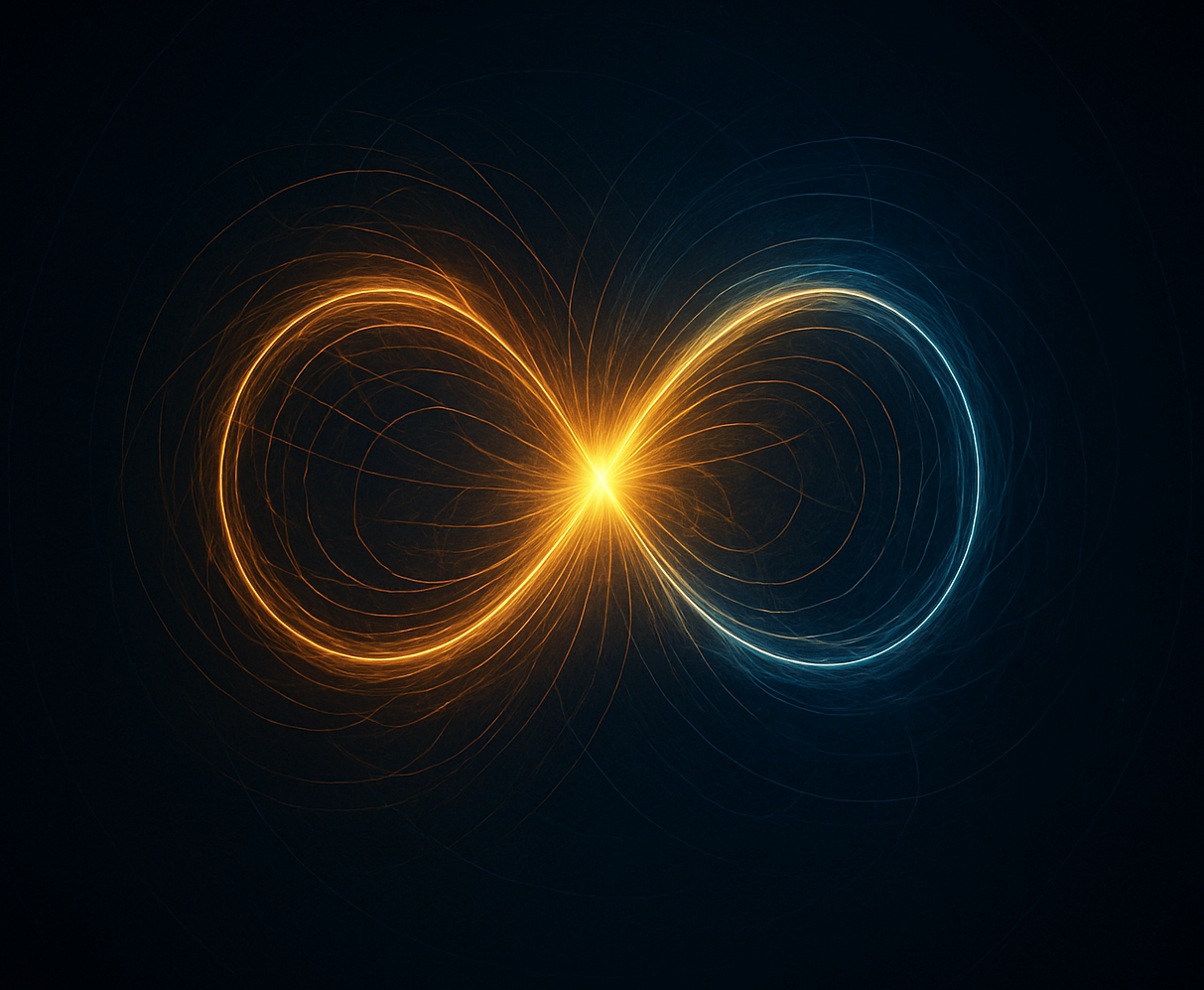Chapter 05
Angular momentum - Planck’s constant h
Planck’s constant could really be referred to as the new atom. For it is the smallest thing. It exists in everything. And it can never be divided.
The importance of Planck’s constant, h, to this theory cannot be overestimated as it represents the smallest amount of angular momentum that can exist, and angular momentum exists in everything. It was originally called the quantum of action. What was meant by this was quantity of energy per unit of rotation and it is this quotient that is a quantum. Despite what many people think though, energy itself is not actually quantised. This is because of the equation E = hf, where the frequency, f is a continuum and this makes energy, E also a continuum. Only h is a quantum.
The existence of this tiny constant is profound. It is the source of all wave motion in quantum mechanics and the cause of wave-particle duality. It means that circular motion is not a continuum but granular, like a unit of charge. Energy is merely a measure of how fast a particle spins, be it an energy photon or matter particle and what is actually spinning is the E-M field that makes up the particle. For matter particles this energy manifests as mass.
Although h is incredibly small(1), it has a critical influence on the formation of fundamental particles and hence all matter. If something physical exists, its spin is h or some whole multiple. That is, when it is a compound object made from many elementary particles. This applies to both energy and matter.
For some reason, many physicists see h merely as just another constant without appreciating its deep physical and philosophical significance. Its fixed numerical value is often taken for granted or glossed over and replaced by unity to simplify some equations. This is a great pity because it misses the point.
But what exactly is h and why is it so important to SED? Apart from being a major term in every equation of quantum mechanics, angular momentum and its preservation, as every ballerina knows, can be a powerful property. Mathematically it is the product of mass times speed times radius of rotation and without the application of a torque or external force, this total will not change. That is, the number of h’s in the system remains constant. This conservation law also means that if one of the three components in its definition varies, another must inversely change to compensate. So, the ballerina pulls her arms in tightly, reducing her radius and consequently spins faster. At this human level and without friction, angular momentum means things continue to spin, because of their inertia in rotation, or how many h‘s they have, but as each h is so small we do not notice the graininess.
However, for fundamental particles, h is critical because although it is small, it is constant, and each must be built from one and only one unit of h. Neither more nor less. This gives us an important clue as to how our model must behave. Furthermore, in the subatomic world and its interactions, both energy times time and momentum times distance, also equals h. Below this minimum value or quantum however, some surprising things are possible, provided overall h does not change, as we shall soon see.
So, although angular momentum is quantised, neither linear momentum nor energy is. Linear momentum is a property reserved for particles once they acquire mass or inertia. Both these things can vary continuously.
A particle portrays the energy it stores, by how fast it spins. This manifests as the frequency of a cycle and an object’s size or radius of motion. A tighter curl spins faster and requires more energy to sustain it, meaning a more rapidly changing and larger field. This equates to more mass or potential energy locked in the soliton, but it does not change its angular momentum. And because h is so small and constant, only fundamental particles portray such behaviour.
Just as all objects are made of atoms, all atoms are made of fundamental particles, for which energy and angular momentum or spin(2) are the two prime properties. The intrinsic energy of a particle tells us how fast it rotates (i.e. its frequency or spin rate). And because mass is energy, we have the curious fact that the smallest fundamental particles are the most massive (i.e. a smaller Compton wavelength). This is the only way they can rotate faster, due to the finite speed of light. Such is SED’s and classical physics’ analysis. Experiments will reveal the truth.
So, all stable elementary particles have exactly one unit of angular momentum or h, for each complete rotation or full wave cycle they perform. We will see that this rotational invariance or fixed spin is responsible for charge conservation, magnetism and other properties such as the forces that hold atoms and their nuclei together. Even gravity is a consequence.
In summary: at our human scale, angular momentum, L, manifests through circular motion and appears not to be quantised. It is calculated from the product of a spinning object's mass, tangential velocity and radius. Thus L = mvr. However, in the realm of fundamental particles, where they are so small, we measure angular momentum or spin in units of h, and find that it is quantised, and never less than one constant or quantum amount.
Its definition in that tiny, fundamental world is, h = mcλ, where m = the particles mass, c = the speed of light, and λ is the Compton or circumferential wavelength(3) of the particle, derived from its energy. In essence then, for particles it is h or nothing.
We will examine the ways in which h influences the subatomic world in the remainder of this book. We will find that they are both numerous and essential.
(1) Its value is about 6.6 x 10⁻³⁴ J/Hz
(2) Unfortunately spin and spin rate are quite different concepts causing great confusion. Spin is angular momentum, while spin rate is energy due to frequency of rotation.
(3) Its radius is ƛ (lambda-bar) or λ/2π. Using this, Planck’s constant becomes ћ and is known as its reduced value. h refers to circumference and ћ to radius.
The Origin of Everything
(Online Edition)
































